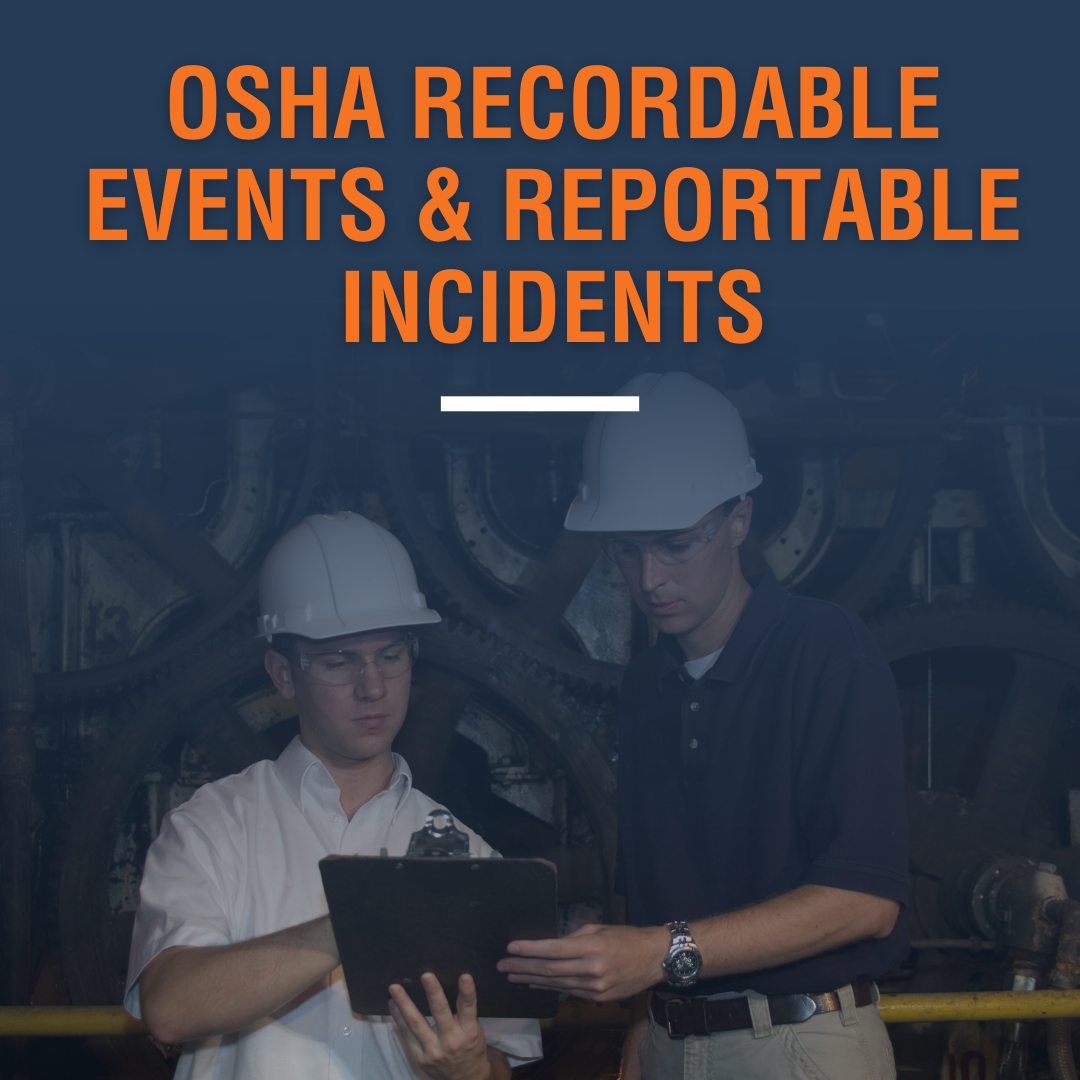We use cookies to make your experience better. To comply with the new e-Privacy directive, we need to ask for your consent to set the cookies. Learn more.
OSHA Recordable Events and Reportable Incidents: Know the Differences
The Occupational Safety and Health Administration (OSHA) requires most employers to record workplace injuries and illnesses. (Some relatively safe industries, and small businesses with fewer than 11 employees, are exempt from OSHA record-keeping rules.) But OSHA has different requirements for different types of injuries. 
Some are considered OSHA recordable events, meaning they must be documented according to OSHA’s guidelines. Others require OSHA incident reporting, often within a tight timeframe. Knowing the difference between recordable events and reportable incidents is key to compliance with OSHA recordkeeping requirements. Keep reading to learn those differences.
What is an OSHA recordable event?
According to OSHA standard 1904.7, non-exempt employers must record injuries or illnesses if they lead to one or more of the following outcomes:
- Death
- Unconsciousness
- Sick days
- Medical care beyond basic first aid
- Changes in work responsibilities, including job transfer
- Professional diagnosis of a significant injury or illness
Additional OSHA standards place recording requirements on other types of injuries, including:
- Cuts or needlesticks that could introduce blood or infectious materials into the body
- Events that require medical removal of the affected employee, according to OSHA standards like those covering hazardous chemicals
- Tuberculosis infection
- Hearing damage, as described in standard 10
If a workplace injury or illness meets any of these criteria, OSHA considers it a recordable event. That means you have to enter it into your official injury log, OSHA Form 300, as well as an incident report, OSHA Form 301, both available for download here. You must submit injury records (OSHA form 300A, available from previous link) to OSHA annually, but some types of injuries must be reported much sooner. These are the cases many refer to as “reportable incidents.”
What is an OSHA reportable incident?
More serious workplace injuries must be reported directly to OSHA, going outside the typical yearly Form 300 submission. These reportable incidents include:
- Fatality
- Amputation
- Loss of an eye or eyes
- In-patient hospital admittance
If a work-related incident leads to any of these outcomes, OSHA requires employers to report them quickly. Deaths must be reported within eight hours. Amputations, eye loss, and hospitalization must be reported within 24 hours.
You have a few options for delivering these reports to OSHA. Following one of these serious injuries, you can:
- Call the nearest OSHA Area Office. Find yours here.
- Call OSHA’s 24-hour hotline: 1-800-321-OSHA.
- Electronically submit OSHA’s Serious Event Reporting Online Form.
In addition to contacting OSHA directly, these reportable incidents should also be recorded on forms 300, 301, and 300A. So in a sense, a reportable incident is also a recordable event; but not all recordable events are reportable incidents.
It’s crucial to keep workplace injury and illness reports up to date. According to OSHA standard 1904.40, if an authorized government representative requests injury records, employers must submit them within four hours. Investigators and inspectors from OSHA may make these requests, and if your records aren’t complete, you’ll struggle to meet this narrow reporting timeline.
To learn more about OSHA recordkeeping and reporting requirements, consult an authorized workplace safety attorney. You can also dig into the standards themselves: OSHA standard 1904 lists employer requirements related to OSHA incident reporting and recordkeeping. When you understand the difference between OSHA recordable events and reportable incidents, you can remain compliant with the standards while also generating valuable data that can help prevent future injuries or illnesses at work.
